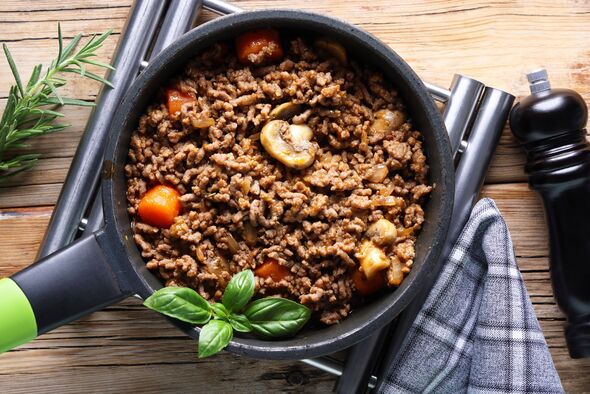Lifestyle
Transform Your Minced Beef: Expert Tips for Delicious Dishes

Cooking with minced beef is a common practice in many kitchens around the world, but many home cooks overlook a crucial technique that can significantly enhance the flavor and texture of their dishes. A recent tip from chef Marion demonstrates how to achieve perfectly cooked minced beef, whether for a barbecue burger or a comforting lasagne.
Choosing the right type of mince is the first step in this culinary journey. It is essential to select high-quality minced beef that is not overly lean. Contrary to popular belief, fat contributes to the flavor of the meat. Mince containing less than 10% fat is considered lean and may result in dry, chewy dishes. Chef Marion recommends opting for minced beef with about 15-20% fat to maintain a rich flavor profile.
When shopping, consumers should not be deterred by the color of the meat. Browned mince may simply indicate oxidation, which does not necessarily mean it is spoiled. Checking the use-by date and relying on one’s sense of smell are effective ways to ensure freshness.
Cooking Techniques for Perfect Minced Beef
The actual cooking process also plays a vital role in achieving the desired results. Marion emphasizes the importance of starting with a hot pan. She advises cooks to heat their cooking oil until it is sizzling before adding the minced beef. “It’s simple, and it starts with a ripping hot pan or wok,” she explains.
Once the mince is in the pan, Marion stresses the importance of not stirring it immediately. Instead, she recommends spreading the ground meat evenly across the cooking surface and allowing it to cook undisturbed for 5 to 6 minutes. This technique allows the meat to sizzle and develop a golden crust, which enhances its flavor.
“The mistake we all make is fussing the mince in the pan,” she notes. “Leave it alone to really sizzle and become coloured.” As the kitchen fills with the aroma of cooking beef, cooks can prepare to check the meat. When flipped, the mince should exhibit a nicely browned crust. At this point, any clumps can be broken up, and the cooking process can continue on the other side.
While some cooks may choose to pour off excess fat, Marion prefers to retain it, as it adds significant flavor to the dish. She advises against adding salt too early in the cooking process, as it can toughen the meat. Instead, seasoning the patties during cooking, over high heat and for a short duration, helps maintain moisture.
With these expert tips in hand, home cooks can elevate their minced beef dishes to new heights. By selecting quality meat and mastering the cooking technique, anyone can transform their meals from ordinary to extraordinary. Whether preparing a family dinner or hosting a barbecue, these insights promise to enhance flavor and enjoyment.
-

 Entertainment3 months ago
Entertainment3 months agoAnn Ming Reflects on ITV’s ‘I Fought the Law’ Drama
-

 Entertainment4 months ago
Entertainment4 months agoKate Garraway Sells £2 Million Home Amid Financial Struggles
-

 Health3 months ago
Health3 months agoKatie Price Faces New Health Concerns After Cancer Symptoms Resurface
-

 Entertainment3 months ago
Entertainment3 months agoCoronation Street’s Carl Webster Faces Trouble with New Affairs
-

 Entertainment3 months ago
Entertainment3 months agoWhere is Tinder Swindler Simon Leviev? Latest Updates Revealed
-

 World2 weeks ago
World2 weeks agoBailey Announces Heartbreaking Split from Rebecca After Reunion
-

 Entertainment4 months ago
Entertainment4 months agoMarkiplier Addresses AI Controversy During Livestream Response
-

 Entertainment2 weeks ago
Entertainment2 weeks agoCoronation Street Fans React as Todd Faces Heartbreaking Choice
-

 Science1 month ago
Science1 month agoBrian Cox Addresses Claims of Alien Probe in 3I/ATLAS Discovery
-

 Health4 months ago
Health4 months agoCarol Vorderman Reflects on Health Scare and Family Support
-

 Entertainment4 months ago
Entertainment4 months agoKim Cattrall Posts Cryptic Message After HBO’s Sequel Cancellation
-

 Entertainment3 months ago
Entertainment3 months agoOlivia Attwood Opens Up About Fallout with Former Best Friend











